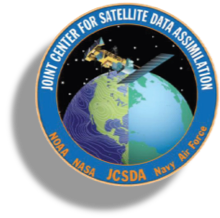Impact of Observing Systems (IOS)
Creating an Observing System Experiment (OSE) infrastructure, state-of-the-art Forecast Sensitivity to Observation Impact (FSOI) diagnostic tools, and adaptive algorithms for processing satellite observations are all interconnected objectives.
FSOI inter-comparison experiments are long term and collaborative across partner agencies and interested international centers.
Scientific Goals
Understand the multi-faceted adjoint-based and ensemble-based FSOI techniques.
Approach forecast sensitivity through a statistical lens.
Reimagine physically-based observation processing with Machine Learning.
Technical Goals
Maintain near-real time diagnostics that can scale.
Invite and extend inter-comparison experiments to additional international centers.
Develop scripts and programs shared across JCSDA partner agencies and participating centers to keep open access of the developed software tools.
The FSOI Near-Real Time Observation Impact web application allows users to explore forecast sensitivity and observation impact from multiple perspectives.
FSOI diagnostic tools that enable the agencies to monitor in real-time the relative contributions of each of the assimilated observing platforms on the forecast skills.
⇣
These diagnostics provide the impetuous and directions for the automated processing algorithms.
Automated and adaptive algorithms for processing satellite observations with the objective of optimizing their impact on forecast.
⇣
These algorithms help to anticipate data loss and target areas for improvement in observations processing.
An OSE infrastructure that permits “what if” scenarios to evaluate the degradation or lost of an instrument or a full satellite in a timely manner.
⇣
The quantification of redundancy in information between platforms assists the team in finding a substitute for a malfunctioning satellite.

